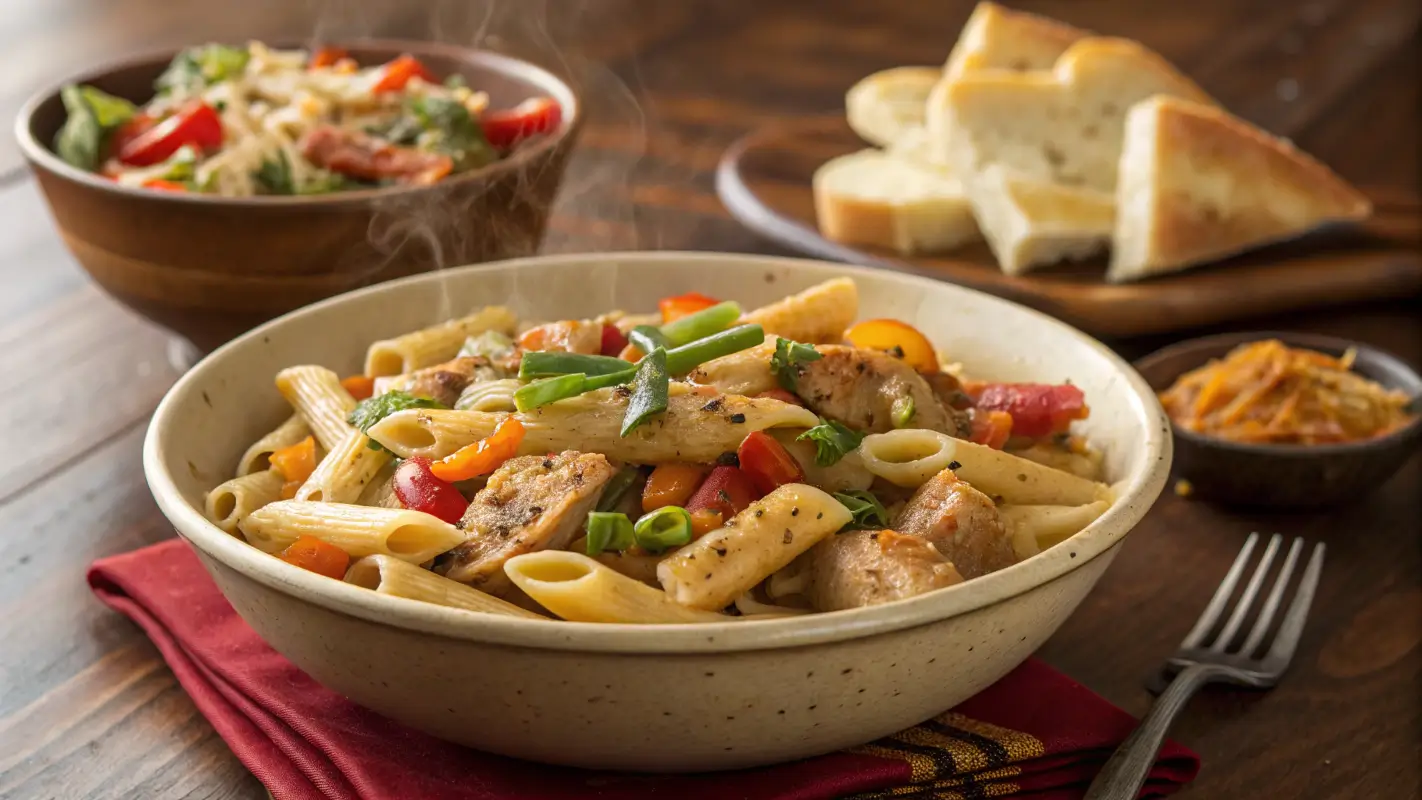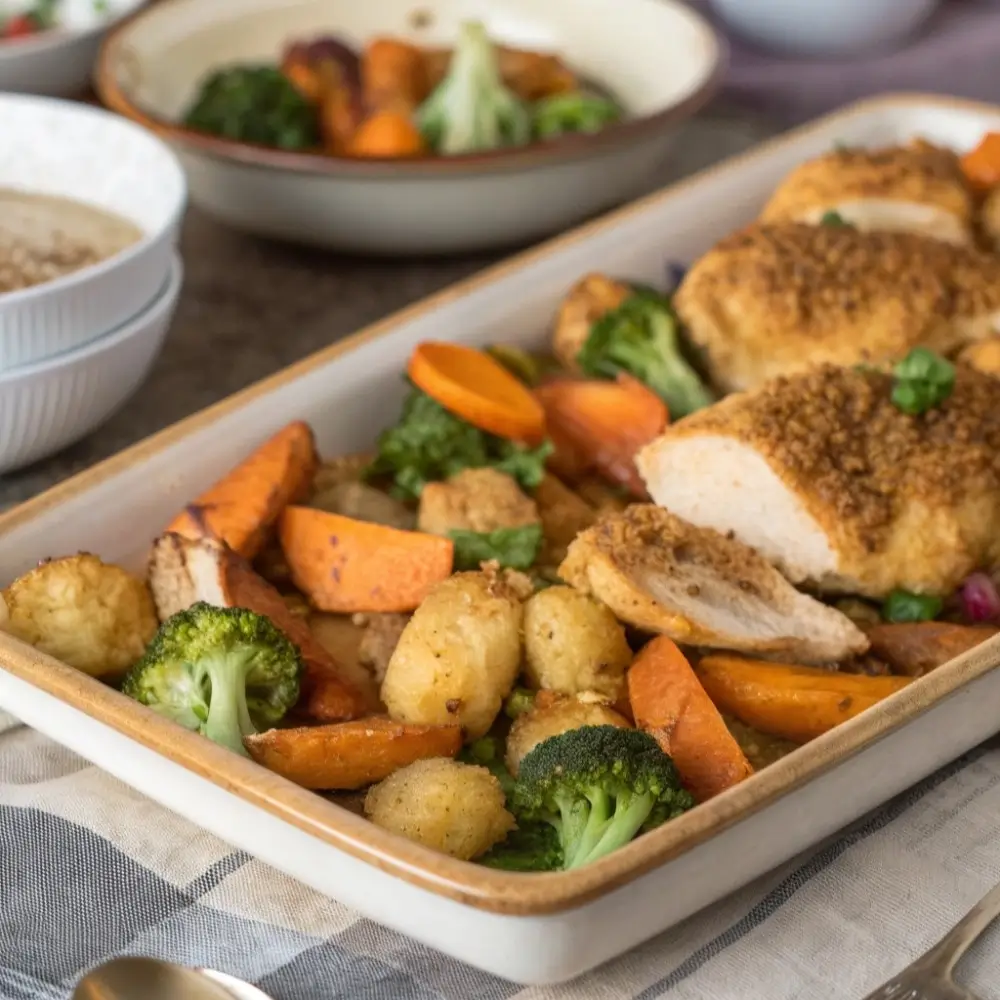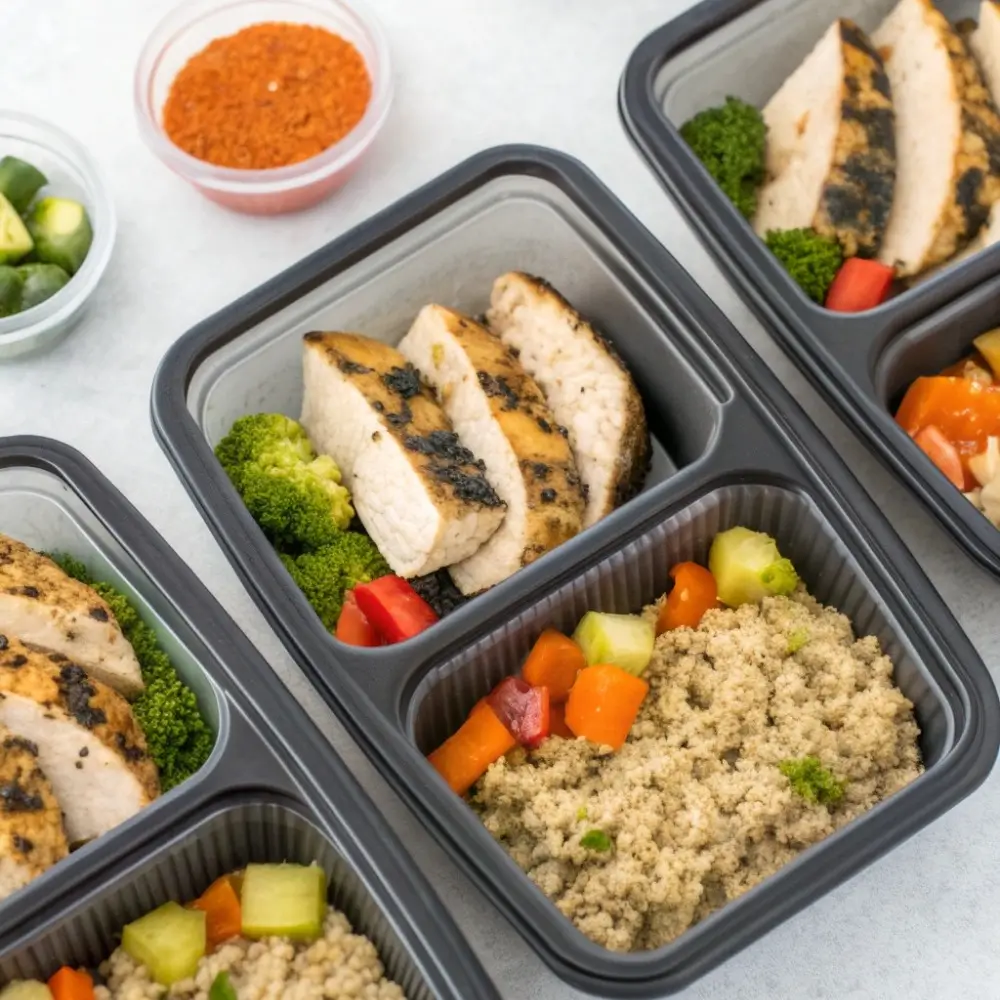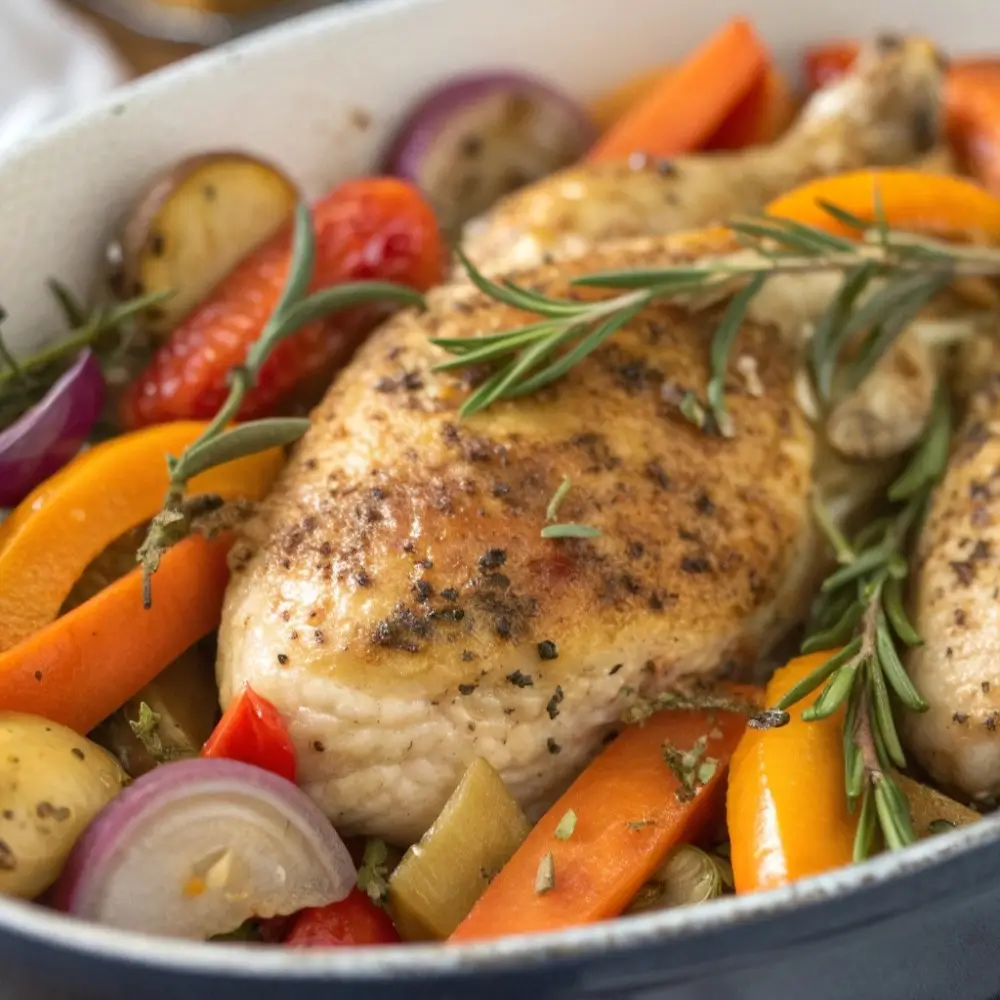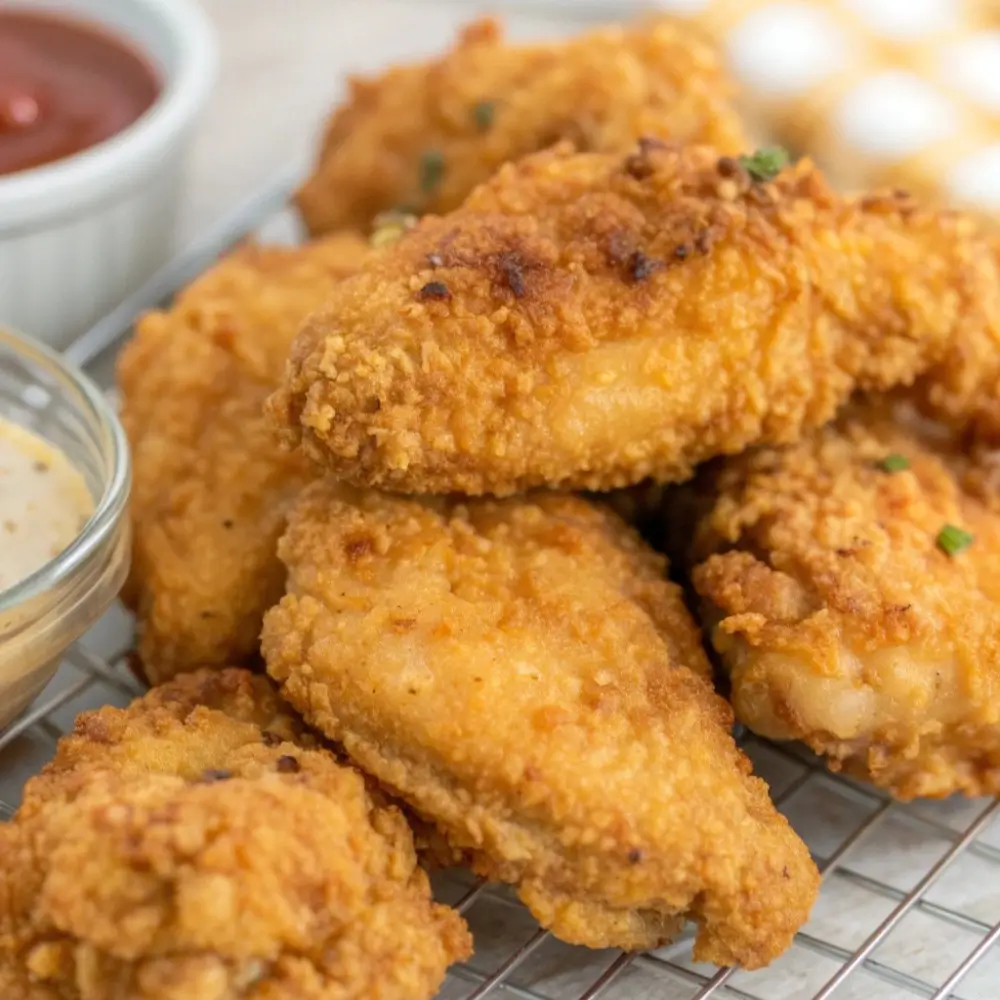Table of Contents
Introduction to Pastalaya
If you’re looking for a spicy, hearty dish that truly embodies the bold flavors of the South, you’ve found it with pastalaya recipe! This Creole-inspired recipe combines the rich, savory notes of Cajun cooking with the comforting texture of pasta, making it a perfect one-pot meal for any occasion. Whether you’re hosting a family dinner, preparing a feast for friends, or simply craving something flavorful, pastalaya is sure to satisfy your hunger and warm your soul.
In this article, we’ll guide you through every step of making this delicious dish from scratch. You’ll learn about its history, how to make the best pastalaya with the freshest ingredients, and even some clever variations to suit your dietary needs. We’ll also sprinkle in tips and tricks to elevate your cooking game and ensure every bite is bursting with flavor.
What is Pastalaya?
Definition and Origins
At its core, pastalaya is a dish that combines pasta with the flavors and ingredients of a traditional jambalaya. Originating from Louisiana, this dish draws on the region’s love for Creole and Cajun cooking, where bold seasonings, hearty meats, and fresh vegetables reign supreme. The beauty of pastalaya is its versatility—it brings together all the savory elements of jambalaya but swaps the rice for pasta, giving it a satisfying twist.
The dish can include various proteins like chicken, sausage, and even shrimp, all cooked in a flavorful broth with the “Holy Trinity” of vegetables: onions, bell peppers, and celery. What’s not to love?
Pastalaya vs. Jambalaya
While pastalaya is often confused with its close cousin jambalaya, there’s a distinct difference. Jambalaya traditionally uses rice as its base, whereas pastalaya relies on pasta. Both dishes share the same rich seasonings and vegetables, but the pasta adds a different texture and flavor profile, making it a bit more comforting and filling for some.
The great part about pastalaya is that you can play around with the type of pasta you use. Whether you prefer penne, rotini, or even spaghetti, the pasta acts as the perfect canvas for soaking up the savory flavors from the meats and spices.
The Cultural Significance of Pastalaya
A Staple in Louisiana Cuisine
Pastalaya isn’t just a meal; it’s a symbol of the Cajun culture. You’ll find this dish served at festive gatherings, family cookouts, and even at local restaurants in New Orleans and beyond. It’s a true Southern comfort food, made to be shared and enjoyed with loved ones. Much like jambalaya, pastalaya is a celebration of the region’s rich culinary heritage, influenced by French, African, and Spanish cooking traditions.
This dish’s versatility allows it to be adapted for various occasions—from a casual weeknight dinner to a large outdoor gathering. The fact that it’s a one-pot dish also makes it incredibly easy to prepare and clean up afterward, which is a big plus when entertaining guests.
Pastalaya in Social Gatherings
If you’ve ever been to a Cajun cookout, you’ll likely have encountered pastalaya in one form or another. It’s the kind of dish that brings people together. Whether it’s a Mardi Gras celebration or a simple family reunion, this dish plays a central role in creating an inviting atmosphere. The spices and the communal nature of the dish—served in large pots and shared around the table—make it a perfect dish for social gatherings.
In addition to the delicious flavors, making pastalaya can also be an enjoyable experience. Gathering your ingredients, cooking together, and serving up steaming bowls of this southern goodness makes for a memorable event. It’s not just about the food; it’s about the connection you share with others.
Essential Ingredients of Pastalaya Recipe
Making a flavorful pastalaya requires fresh, high-quality ingredients. The beauty of this dish lies in its simplicity and how each component contributes to the depth of flavor. From the proteins to the seasonings, every element plays a crucial role in achieving the perfect balance of savory, spicy, and comforting goodness.
Proteins
Smoked Sausage (Turkey or Chicken Sausage)
One of the signature ingredients in pastalaya is the smoked sausage, which adds a rich, smoky flavor to the dish. You can use turkey sausage or chicken sausage as a flavorful substitute. The key is to ensure the sausage is well-seasoned and cooked until crispy for the best texture. These options provide a delicious depth to the dish while keeping it light and savory.
Chicken (Thighs or Breasts)
Chicken is another essential protein that brings tenderness and a subtle, juicy flavor to pastalaya. While you can use either chicken thighs or chicken breasts, many people prefer thighs because they’re more flavorful and less prone to drying out. Searing the chicken before adding it to the dish helps lock in the juices and adds an extra layer of flavor.
Optional Additions: Shrimp
If you want to get adventurous with your pastalaya, you can add shrimp for an extra flavor boost. Shrimp pairs especially well with the dish, offering a delicate yet bold flavor that complements the spiciness of the seasonings. For a more traditional jambalaya feel, you can also add chicken sausage or turkey sausage, which will still bring a rich, savory flavor to the dish.
Vegetables
The Holy Trinity: Onion, Bell Pepper, Celery
The “Holy Trinity” of Louisiana cooking refers to the classic combination of onions, bell peppers, and celery. These vegetables form the base of nearly every dish in Creole and Cajun cuisine, providing a fragrant, aromatic foundation for the pastalaya. Their natural sweetness and slight crunch add depth and texture to the dish.
Garlic and Green Onions
In addition to the Holy Trinity, garlic and green onions are key to building the complex layers of flavor in pastalaya. Garlic brings a savory, pungent note, while green onions add a touch of brightness and a bit of fresh crunch when sprinkled on top at the end.
Seasonings and Spices
Creole or Cajun Seasoning
Creole or Cajun seasoning is the heart of the flavor profile in pastalaya. These pre-mixed spice blends are made up of paprika, cayenne pepper, thyme, oregano, and other herbs and spices, delivering the perfect amount of heat and flavor. Don’t be afraid to experiment with different seasoning blends to find your perfect balance of heat and flavor!
Paprika, Oregano, Thyme, and Bay Leaves
Alongside Creole or Cajun seasoning, paprika, oregano, thyme, and bay leaves are often added to enhance the aroma and taste of pastalaya. These spices infuse the dish with subtle, earthy notes that tie everything together beautifully.
Salt and Pepper
Last but certainly not least, salt and pepper are essential for seasoning. Taste as you go, adjusting the salt to your preference, and adding pepper to give the dish a little more kick if desired.
Liquids
Chicken Broth
Chicken broth is typically used in pastalaya, as it adds moisture and a savory undertone to the dish. It helps the pasta absorb all the delicious flavors while keeping everything moist and tender. If you’re looking to reduce sodium, consider using low-sodium chicken broth.
Water
Along with chicken broth, you’ll need some water to ensure the pasta cooks evenly and absorbs all the spices and seasonings. It’s important to keep the liquid ratio balanced so the pasta doesn’t become mushy or dry.
Pasta
Choosing the Right Pasta
The type of pasta you choose will have a significant impact on the final texture of the dish. Traditional pastalaya often uses penne or rotini, as their shape allows them to soak up the flavors of the broth while maintaining a firm texture. Avoid using long pasta like spaghetti, as it can become too soft and mushy in a dish that’s supposed to be hearty and filling.
Cooking Pasta in the Dish
One of the best aspects of pastalaya is that the pasta cooks directly in the pot with the other ingredients, absorbing all the flavorful liquids. This method ensures that the pasta has a rich, savory flavor throughout the dish.
Now that you know what goes into a fantastic pastalaya, let’s move on to the preparation steps that will turn these ingredients into a mouthwatering meal.
Preparation Steps Of Pastalaya Recipe
Making Pastalaya Recipe is an exciting and relatively simple process. The key is to layer the flavors properly and give each ingredient enough time to release its full potential. Here’s how you can do it step by step.
Preparing the Meats
Slicing and Seasoning
Before you begin cooking, it’s important to slice your smoked sausage and chicken into bite-sized pieces. If you’re using thighs, make sure to remove the skin (unless you want extra crispy skin for added flavor). Season both proteins with Creole seasoning, salt, and pepper to infuse them with flavor right from the start.
Browning Techniques
In a large, heavy-bottomed pot, heat a bit of oil over medium-high heat. Add your sausage first and cook it until it develops a nice golden-brown crust. This will add that irresistible smoky flavor we all love. Once the sausage is done, remove it from the pot and set it aside.
Next, add the chicken to the pot. Brown the chicken pieces on all sides, which will help seal in the juices and give the meat a deliciously crispy exterior. Once the chicken is cooked, remove it from the pot as well and set it aside with the sausage.
Sautéing the Vegetables
Cooking the Holy Trinity
Now it’s time to cook your vegetables. Add a little more oil to the same pot, then toss in your onions, bell peppers, and celery (the Holy Trinity). Sauté them over medium heat, stirring occasionally, until they soften and become fragrant. This usually takes around 5-7 minutes. You’ll begin to notice the wonderful aroma filling your kitchen!
Adding Garlic and Green Onions
Once the Holy Trinity has softened, add in your garlic and continue cooking for another 1-2 minutes until fragrant. Then, toss in the green onions and give everything a good stir to ensure the flavors meld together.
Building the Flavor Base
Incorporating Spices and Seasonings
Now that your vegetables are sautéed to perfection, it’s time to bring in the seasonings. Add your Creole seasoning, paprika, oregano, thyme, and bay leaves to the pot. Stir everything together to evenly distribute the spices, allowing them to bloom and release their oils.
Deglazing the Pan
After seasoning, you’ll want to deglaze the pot to scrape up all the flavorful brown bits left from cooking the meat. Pour in a little bit of chicken broth and stir, ensuring all those tasty morsels are incorporated into the sauce. This step is essential for achieving maximum flavor in your pastalaya.
Cooking the Pasta
Adding Liquids and Pasta
Once the flavor base is ready, it’s time to add the chicken broth and water. Bring the liquid to a simmer, then toss in the pasta of your choice. Make sure the pasta is submerged in the liquid, as this will allow it to cook perfectly and soak up all the savory goodness.
Simmering to Perfection
Let everything simmer gently for 15-20 minutes or until the pasta is tender and the liquid has mostly been absorbed. Stir occasionally to prevent sticking and ensure the pasta cooks evenly. Be sure to check the seasoning levels along the way, adjusting salt, pepper, or Cajun seasoning as needed.
Final Touches
Adjusting Seasonings
Taste your pastalaya before serving, and adjust the seasoning if necessary. If you like a bit more heat, feel free to add more Cajun seasoning or a dash of cayenne pepper. For a little more depth, a squeeze of lemon or a pinch of smoked paprika can really bring the flavors to life.
Garnishing and Serving
Once the pastalaya is cooked to perfection, serve it hot! Garnish with a sprinkle of fresh green onions or even some chopped parsley for an added burst of color and freshness. Pair with a side of cornbread or a light green salad, and you’ve got yourself a Southern feast!
This dish is perfect for feeding a crowd, so get ready for your family and friends to ask for seconds!
Variations and Tips
While the classic pastalaya recipe is incredibly delicious, one of the best things about this dish is its flexibility. You can tweak it to suit your tastes, dietary needs, or even the ingredients you have on hand. Below are a few variations and helpful tips to take your pastalaya game to the next level.
Protein Variations
Chicken and Sausage Alternatives
If you’re not a fan of chicken or sausage, there are plenty of other proteins you can add to your pastalaya. For a lighter option, try using turkey or chicken sausage. For seafood lovers, adding shrimp or even crab can elevate the dish with a fresh, briny touch that complements the spicy seasonings. Just remember to adjust the cooking time for delicate proteins like shrimp, adding them toward the end to avoid overcooking.
Vegetarian Pastalaya
For a vegetarian version, simply leave out the meat and substitute with hearty vegetables like mushrooms, zucchini, or eggplant. You can also add tofu or tempeh for extra protein. A vegetable-based broth can replace the chicken broth, ensuring that the dish stays rich and flavorful without the need for animal products.
Spice Level Adjustments
If you prefer a milder dish, simply reduce the amount of Cajun seasoning or cayenne pepper. You can also substitute with a more mild seasoning blend, such as a Creole seasoning that’s light on the heat. On the flip side, if you love bold flavors, feel free to increase the spice levels by adding more cayenne or even some jalapeño peppers for a fiery kick.
Cooking Tips for Perfect Pastalaya
Pasta Tips
To avoid overcooking the pasta, keep an eye on it while it’s simmering. Stir the pasta occasionally and make sure the liquid doesn’t completely evaporate. You can always add a little more broth or water to keep everything moist and tender.
Layering Flavors
The key to a great pastalaya is in the layers of flavor. Don’t rush through the sautéing of the vegetables, as they need time to develop a rich base. Also, be sure to let the spices bloom in the oil before adding liquids. This allows the herbs to release their full flavors, which is essential for creating a deep, satisfying taste.
Storing and Reheating Pastalaya
Pastalaya is a great make-ahead dish! If you happen to have leftovers, store them in an airtight container in the refrigerator for up to 3 days. To reheat, simply add a splash of broth or water and heat gently on the stove until warm.
Serving Suggestions
Once your pastalaya is cooked to perfection, it’s time to serve it up! This dish is already filling and flavorful on its own, but you can elevate the dining experience with a few tasty sides and garnishes.
Side Dishes to Pair with Pastalaya
Classic Cornbread
No Southern meal is complete without a side of cornbread. Its slightly sweet flavor pairs perfectly with the rich, spicy pastalaya. Whether you prefer it baked in a skillet or a pan, cornbread’s crumbly texture and comforting taste will make a great addition to your meal.
Green Salad
A crisp green salad is the perfect contrast to the richness of pastalaya. Go for a simple salad with mixed greens, cucumbers, and a tangy vinaigrette, or try a more indulgent side like a Caesar salad for extra creaminess.
Roasted Vegetables
If you’re craving some extra veggies, roasted vegetables make an excellent side dish. Carrots, brussels sprouts, or green beans roasted with olive oil and garlic will balance out the spicy, savory flavors of your pastalaya, while adding a pop of color to the plate.
Garnishes
Fresh Herbs
A sprinkle of fresh green onions or parsley on top of your pastalaya adds a burst of color and a refreshing touch. Not only do they enhance the visual appeal, but they also bring a light, aromatic flavor that cuts through the richness of the dish.
Hot Sauce or Pickled Jalapeños
If you like things a bit spicier, consider serving your pastalaya with a side of hot sauce or pickled jalapeños. These additions give you control over the spice level and can add an extra layer of tangy heat to the dish.
Drinks to Pair with Pastalaya
Since pastalaya is packed with bold flavors, it pairs wonderfully with refreshing drinks. Try an iced tea with lemon, a cool citrus punch, or even a sparkling water with lime to cleanse your palate between bites.
Frequently Asked Questions (FAQs)
When it comes to pastalaya, there are a lot of questions that pop up—especially since this dish can be customized in so many ways. Below, we’ve compiled the most frequently asked questions to help you troubleshoot any concerns and make your pastalaya as delicious as possible.
Can I use different pasta for pastalaya?
Yes, absolutely!
While traditional pastalaya often uses penne or rotini, you can experiment with other types of pasta based on your preference. Fusilli, cavatappi, or even farfalle (bowtie pasta) are great alternatives. The key is to choose a shape that can hold onto the sauce and soak up all the flavorful broth without becoming too soft.
Can I make pastalaya without meat?
Definitely!
If you’re looking for a vegetarian or vegan version of pastalaya, you can skip the meat entirely and load up the dish with extra vegetables like zucchini, mushrooms, and eggplant. You can also use plant-based proteins like tofu or tempeh for added texture and nutrition. Just make sure to substitute the chicken broth with a vegetable broth.
How do I adjust the spice level in pastalaya?
It’s all about balance!
To make your pastalaya more mild, simply reduce the amount of Cajun seasoning, cayenne pepper, and paprika in the recipe. If you want to add more heat, you can increase the spice levels with cayenne, jalapeños, or hot sauce. Always taste as you go to make sure it reaches your preferred level of heat.
Can I make pastalaya ahead of time?
Yes, you can!
Pastalaya actually makes for a great make-ahead meal. Prepare it in advance and store it in an airtight container in the refrigerator for up to 3 days. When you’re ready to serve, simply reheat the dish on the stove with a little extra broth or water to prevent it from drying out.
What can I serve with pastalaya?
A variety of sides!
Great sides to serve with pastalaya include cornbread, a green salad, or roasted vegetables. These sides balance out the rich, savory flavors of the dish, offering a nice contrast in both texture and taste. You can also serve it with a side of hot sauce or pickled jalapeños if you like it extra spicy!
Now that your questions are answered, it’s time to get cooking and enjoy this delightful Southern dish!
For helpful tips on how to perfect your pastalaya and adjust spice levels, check out this expert advice from Allrecipe’s cooking tips.
